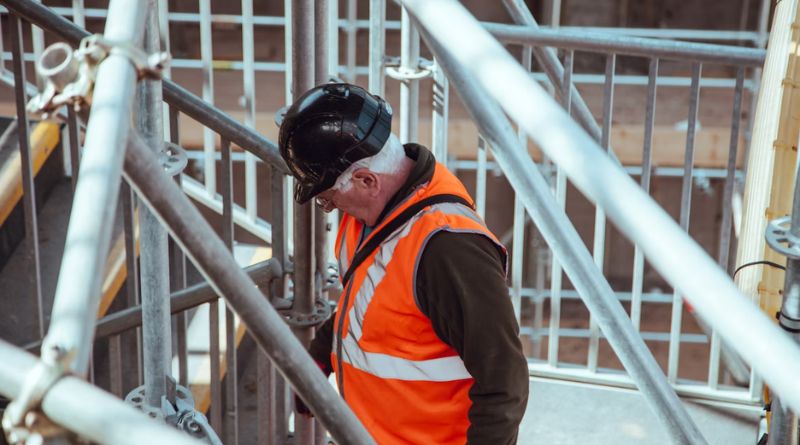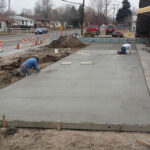In engineering, balancing safety and efficiency is crucial—they work best together, not against each other. In 2023–24, 138 UK workers lost their lives, and 33.7 million workdays were lost to work-related illnesses and injuries. On top of that, fines over £1 million from the Health and Safety Executive show just how important it is to get safety right, both ethically and financially.
Creating a real safety culture means more than just following rules—it requires teamwork from everyone, from management to workers on site. Regular training, proper use of equipment, and strict safety standards are key. In civil engineering, where risks like falls, machinery accidents, and hazardous materials are common, keeping safety a daily priority protects workers and prevents costly delays.
Common Hazards and the Importance of Safety Systems
Some risks just keep turning up in engineering: falls from heights are an obvious worry, especially on construction and civil sites. Working at heights may be run-of-the-mill for some, but it’s easy to underestimate how quickly a slip can turn into an emergency.
Machinery is another source of trouble. Even experienced workers can get caught out if they’re not familiar with the specific models or if corners are cut on safety routines. It only takes a moment of confusion or misplaced confidence to cause real harm.
Chemical exposure adds yet another concern, with dangers that might hit straight away or crop up years later. These hazards are daily realities, not rare exceptions.
Following safety rules is a baseline—regulations from groups like the UK Health and Safety Executive aren’t just legal hoops to jump through, but practical steps for everyone’s wellbeing. But ticking boxes won’t do all the heavy lifting. Regular, meaningful training helps keep knowledge fresh and workers confident on site.
Modern technology can make a real difference in safety management. Digital systems can flag up lapses and check that workers have the right credentials before they even step on site. Tools like these make quick work of tasks that would otherwise bog you down with paperwork, freeing up time for the stuff that matters.
In short, a forward-thinking attitude and a shared sense of responsibility are what truly keep people safe—helping teams work smarter, not just harder.
Smart Manufacturing and Safety
Pairing safety systems with automation goes beyond ticking boxes; it’s about making sure workplaces remain both efficient and, more importantly, safe for everyone involved.
Smart manufacturing blends safety routines with automated technology so machines can run smoothly without putting people at risk. Standard practices like machine guarding, lockout/tagout, and real-time monitoring need to be part of daily operations, not afterthoughts. When these are in place, the chances of accidents fall dramatically.
Sticking to safety regulations isn’t just some legal exercise; it’s a daily commitment to people and productivity. Keeping machinery safe also means resolving potential hazards quickly before anyone gets hurt or production is interrupted.
Automation changes how work gets done, improving safety as much as output. Robots and AI can handle jobs too risky or tedious for people, letting staff focus on tasks where human judgement actually matters. This shift means a safer working environment and fewer people exposed to hazards every day.
Digital systems that monitor machinery around the clock help spot issues early. Predictive maintenance lets teams troubleshoot before something breaks, which means less downtime and lower risk of some unexpected mishap. It’s a proactive way to keep both the business moving and workers safe.
Role of Engineers in Enhancing Workplace Safety
Developing Comprehensive Safety Plans
Building a strong safety plan does far more than tick boxes for compliance. When engineers put in the effort to lay out a clear framework, it sends a powerful message to staff—everyone’s wellbeing is genuinely valued. This attitude can ripple throughout the company, making safety second nature for teams at every level.
It’s not simply about having rules written down. A solid safety plan spells out exactly how to handle risks and spells out what’s expected, so everyone knows where they stand. This level of clarity cuts down on confusion, keeps safety routines consistent, and lowers the chances of things going wrong. High-risk industries like construction or manufacturing especially benefit, as thorough checks help spot problems before they snowball.
Every safety plan starts with a good, honest look at the workplace. Detailed inspections reveal issues early, and fixing them quickly is much less hassle than dealing with the fallout from an incident. Think of it as routine maintenance for peace of mind—whether engineers adjust equipment, refine processes, or show staff best practices, every small improvement helps.
Proper training is absolutely essential. Making sure everyone’s confident around technical equipment and up to speed on how to avoid hazards means there’s a much smaller chance of things slipping through the cracks. Training isn’t a one-off tick-box; it’s ongoing, keeping skills sharp and risks low.
Kit and machinery need a watchful eye, too. Regular checks keep everything running smoothly and help sidestep breakdowns or accidents that could put people at risk. Deliberate actions to control hazards, like using barriers or setting new routines, make a lasting difference by cutting down potential trouble before it starts.
Training and Education
Regular safety training is essential for keeping workplaces secure. When employees know how to spot hazards and what to do in an emergency, everything runs more smoothly and safely. Ongoing training goes a long way: it cuts down accidents, boosts day-to-day confidence, and builds a team spirit where safety isn’t just a checklist, but simply how things are done.
Different types of training suit different needs. Onsite sessions let employees get their hands dirty, practising safety steps where they’ll actually use them. These are especially useful if jobs involve heavy machinery or risky materials. Online learning, on the other hand, fits around a busy schedule. People can pick up what they need to know about things like new safety laws or compliance rules, and even go back over tricky points at their own pace.
Learning how to handle emergencies is another vital piece of the puzzle. Simulations and drills make sure that, if something does go wrong, everyone knows what to do and can act fast.
Regular Safety Inspections
Regular safety inspections are one of the main ways to spot and deal with risks before they have a chance to cause trouble. By working through key areas like machinery, equipment, electrics, and storage, engineers pick up on issues early and can step in before small problems become serious hazards.
This habit of checking things regularly means accidents and injuries are much less likely to happen, as faults are caught and sorted out quickly. It keeps everyone safer and allows work to run more smoothly, with fewer nasty surprises slowing things down.
These inspections also help engineers stay on top of any new safety requirements. Rules and standards don’t stand still, so checking in often makes sure nothing gets missed and that legal boxes are ticked. Keeping up-to-date in this way avoids fines and extra stress, while showing everyone that safety really does matter.
In short, routine safety checks are more than just a formality. They make workplaces safer and protect both people and reputations along the way.






